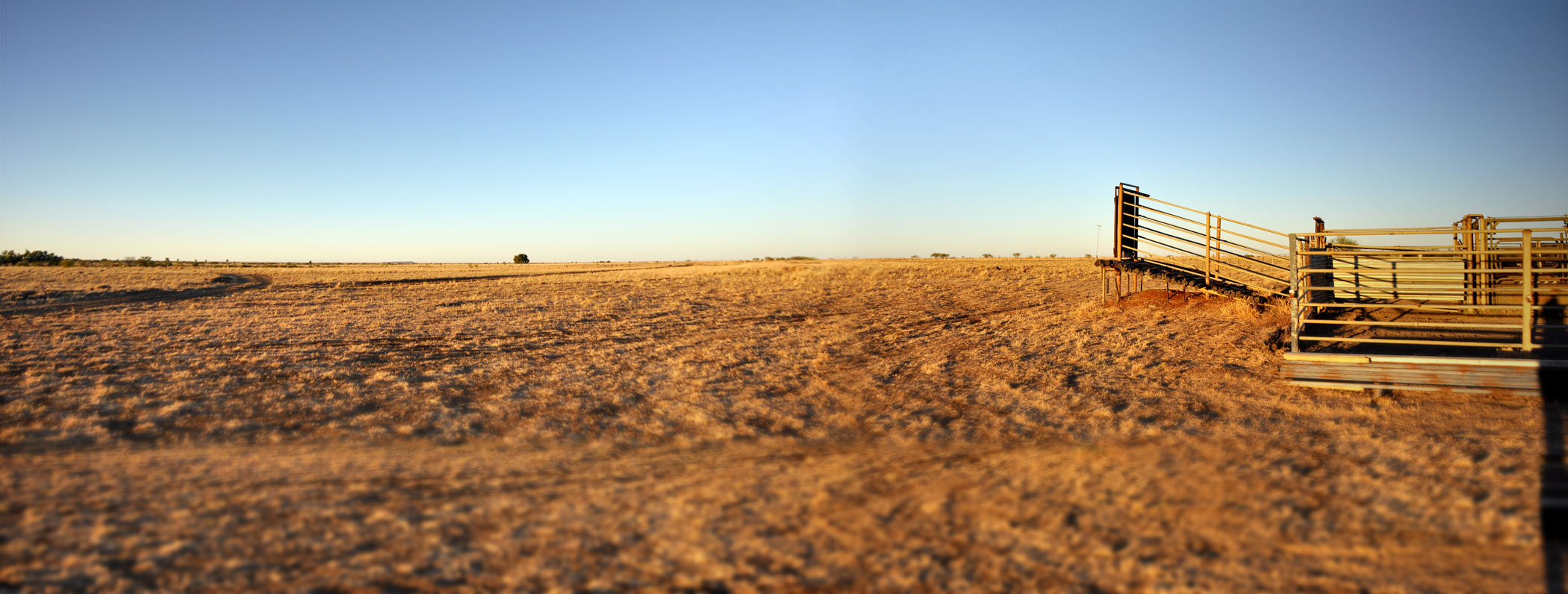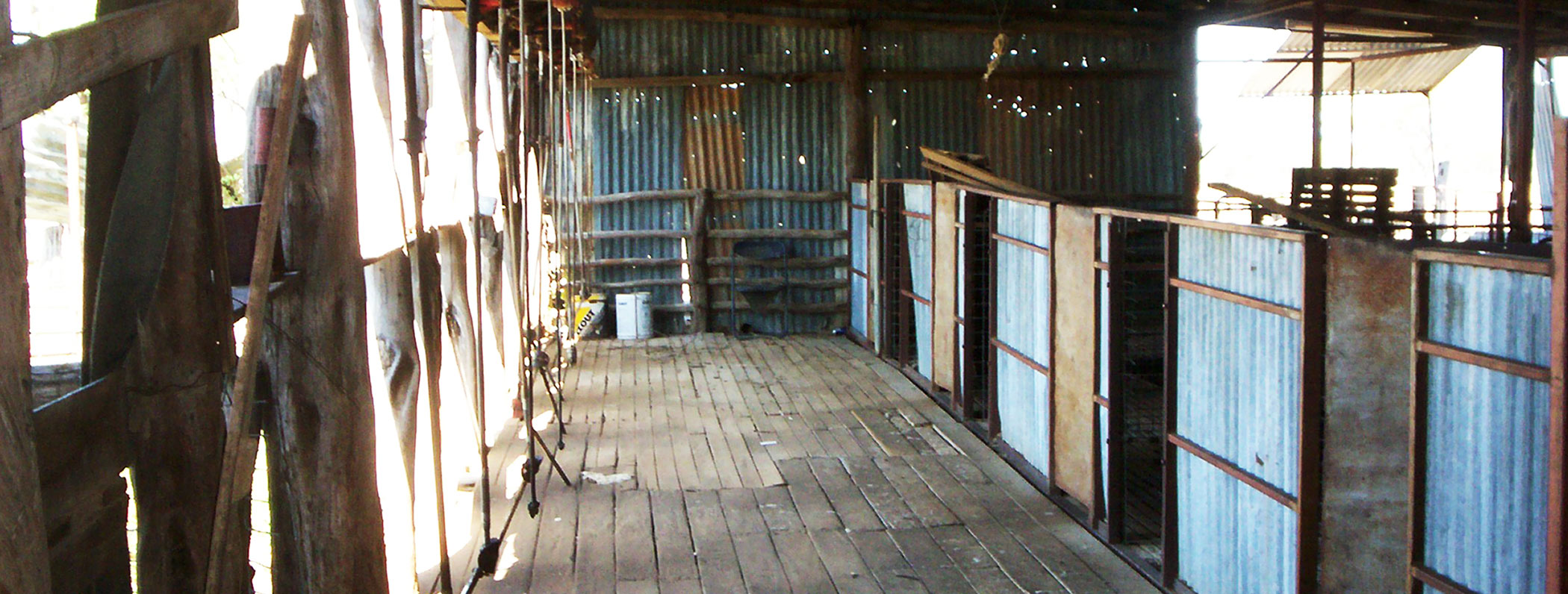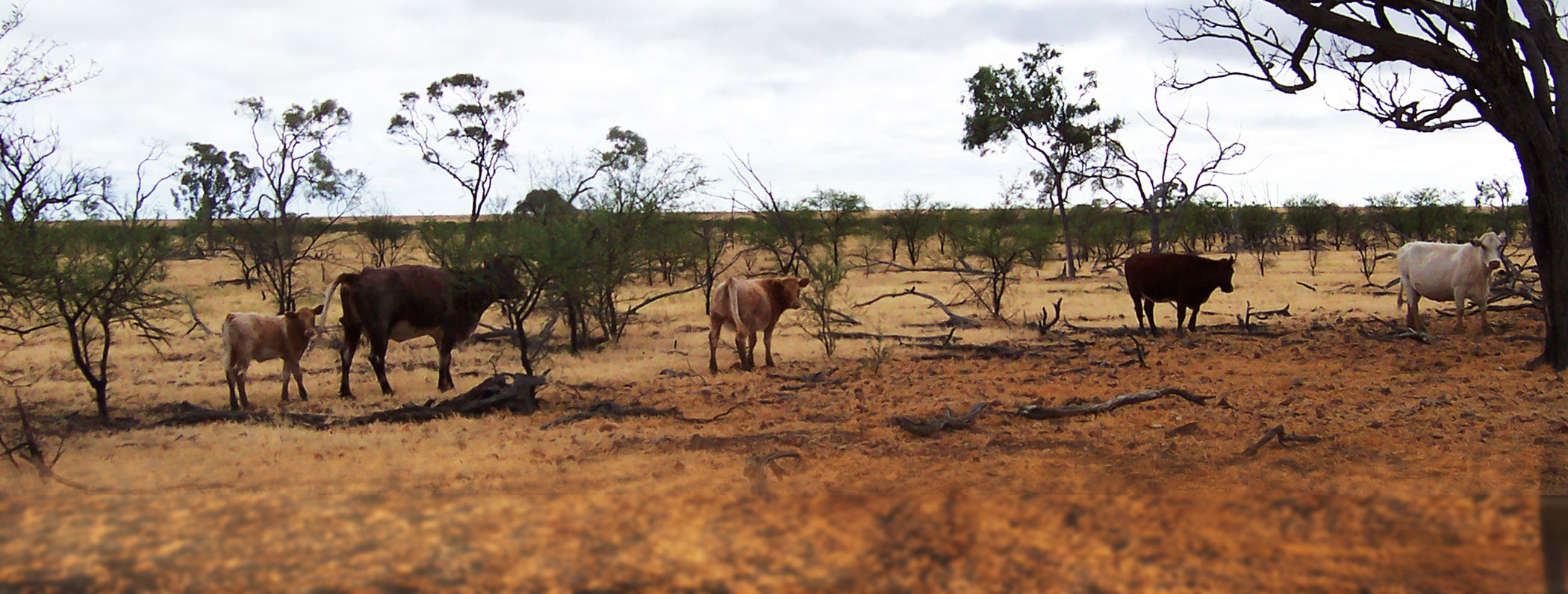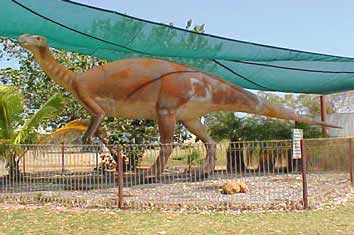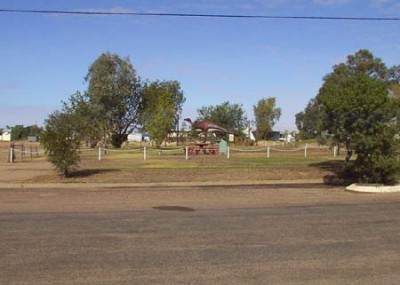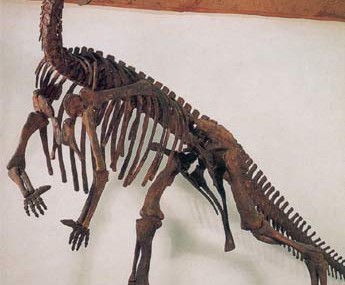Australia was part of the Gondwana subcontinent, which was made up of Australia, Africa, South America, India and Antarctica. Around 200 million years ago Gondwana started to separate, with Australia the last to break away around 45 million years ago. Australia was originally located closer to the South Pole when the world was warmer and forests grew all over the world.
There was a vast inland sea covering most of the lower inland of today’s Australia. The Eromanga Sea covered more then half of the land and the Muttaburrasaurus roamed the shoreline.
Muttaburra is located in one of the richest dinosaur areas in Australia referred to as the ‘fossil triangle’. This area was part of the great inland sea, which covered Australia about 115 million years ago.
In 1963, Doug Langdon, while mustering along the Thomson River, stopped to give his horse a drink and leant down for one himself and noticed a large rock completely out of place in the area. After some investigation, he contacted the Queensland Museum and Dr Bartholomia arrived in Muttaburra two months later to look at the rock! So, the Muttaburrasaurus Langdoni was born
Muttaburrasaurus Langdoni
This dinosaur is the second most complete dinosaur skeleton found in Australia and is from the early Cretaceous marine deposits of central Queensland living 100 million years ago. The Muttaburrasaurus roamed this region, which was the edge of the Inland Sea. One hundred million years ago, this area was on the edge of a shallow inland sea that extended from what is now the Gulf of Carpentaria through to South Australia. Australia was joined to Antarctica, but there were no polar ice caps at this time and the world climate was quite warm. Although it was unquestionably a land animal, its skeleton was buried in shallow water marine sediments with rich assemblage of molluscs. This may suggest it washed out to the inland sea after its death, sunk and was then buried with marine vertebrates.
Little is known about the actual environment of this region during the life of the Muttaburrasaurus.
Muttaburrasaurus was about seven metres long and walked about on its hind legs spending most of its time foraging and resting on all fours. This giant was a plant eater and belonged to the ornithopod group of dinosaurs. It is an orithischian [bird hipped] dinosaur and is closely related to other dinosaurs found in every continent except South America and Antarctica. The Muttaburrasaurus had a spiked thumb about 15 cm long that may have been used as a weapon.
The inflated, hollow bony chamber on the Muttaburrasaurs’ snout with thin bone, was one of the most distinctive features. No one really knows why this chamber existed but maybe it was for the noise or to enhance its smell. The front of the mouth lacked teeth and it’s thought that it probably developed as a horny beak, like most ornithopods. The teeth of the Muttaburrasaurus Langdoni were different from others as their teeth were all replaced at the same time so the upper and lower jaws fitted together evenly. These teeth acted as a pair of shears. The Muttaburrasaurus was a plant eater and maybe the action of the teeth meant that they fed on tougher plants than other dinosaurs.
Five specimens have been found in Queensland, this one near Muttaburra was first followed by two discoveries near Hughenden and two more near Lightening Ridge in New South Wales.
Neil Hall originally purchased the life-size replica standing in the park in Muttaburra opposite the store in 1988.
Adapted from text by Louise Moloney
